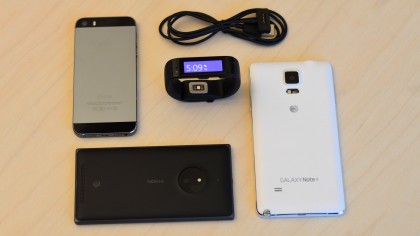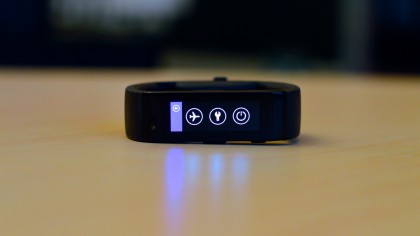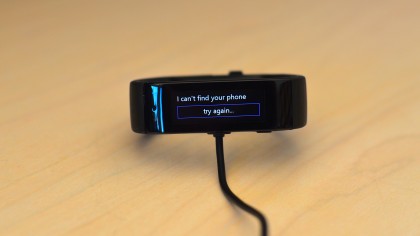Why you can trust TechRadar
It's such a little luxury, but the first world problem of having too many devices really is a hassle. That's why it's fantastic that the Microsoft Band is compatible with iOS 7.1, iOS 8, Windows Phones 8.1 and Android 4.3-4.4 devices through Bluetooth. Most fitness trackers are cross-platform, but there are still a few out there that aren't. The majority of smartwatches are in the Android Wear camp, meaning you can only use Android phones. Then there's the Samsung-only Gear series.

Despite the cross-platform support, the band works best with Windows Phones, thanks to Cortana. Using the Halo-inspired virtual assistant requires a data or Wi-Fi connection, but with it, you can use voice commands to set alarms, dictate short voice notes, create time/location/people based reminders, ask Bing questions, create calendar events, play music through your phone, and tell it to call or text message people.
You can also respond to notifications with short, pre-written responses but again, the band only lets you do so with Windows Phone devices.
Battery life
Microsoft says the band should last two days with regular usage; prolonging battery life means going into your settings and turning off watch mode (so the display is blank), setting the brightness to auto or low, shutting off the GPS when running and toggling off the display when exercising.

Despite the recommended settings, I was actually able to get two full days with almost everything on after fully charging the band. I received notifications from Facebook Messenger, Twitter, other app notifications (Instagram likes, LinkedIn requests, etc), phone calls and text messaging. I kept the heart rate monitor running, left the GPS on, had the brightness on high and had the clock face showing constantly - except at night when I was sleeping though the band was still on tracking my sleep. I didn't exercise for long amounts of time during the first two days though.
I attached the little magnetic end of the USB charger in the afternoon on Monday for a full charge and, like clockwork, it died at the same time on Wednesday. The band powered down a bit sooner from Thursday to Friday after using it for multiple exercising sessions - two 20 minute guided workouts - and having the GPS on while running, but it still managed to last a day and half, opposed to a full two days.
Microsoft says it takes about an hour and a half to get a full charge. This matches up well with my experience. The band was in the red low battery warning stages when I plugged it in after the first two days of usage, and after 60 minutes it was at 80% which was faster than I expected. It took the full hour and a half after exercising and using more of the band's features.

At the end of my week, I was pretty pleased with the band's battery life and charging time. It did what I expected, and there are reasonable ways to conserve its energy.
Trying to figure out how to keep the batteries alive as long as possible is a huge sore spot for wearables, but something a lot of companies are making headway in solving. Misfit's Flash and Shine fitness trackers last up to six months and the Garmin Vivofit lasts a year by using old fashioned watch batteries. However, both are pretty simple devices, with neither screens nor the ability to give you notifications.
Current page: Compatibility and battery life
Prev Page Apps and fitness Next Page Using Cortana with Microsoft BandCameron is a writer at The Verge, focused on reviews, deals coverage, and news. He wrote for magazines and websites such as The Verge, TechRadar, Practical Photoshop, Polygon, Eater and Al Bawaba.

